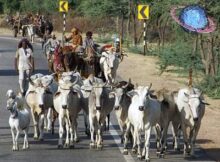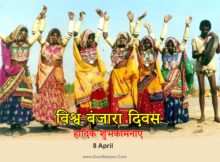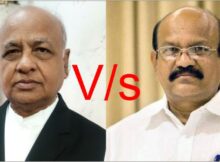India has got freedom in 1947 but still the development of Banjara is not in a good position because of lack of support and general awareness in education and employment. Even after 65 year of independence there has not been considerable progress and the banjara are still remained in unbalanced position. There have been different reason why the banjara has suffered low rates of literacy in education improvement .It is evident that the national government are not focussing too, given appropriate weightage for the upliftment of downtrodden people. Because of unchanging social norms and behaviour, as a result the incentive for pursing the education were the minimal therefore , the dalit were still physically and emotionally harassed by the upper class people. Today, even in the modern world the system of black mail is still continuing and the dalit literate rate has affected lower than the rest of the india.Still the status of downtrodden people are in hostile position wherein oppression and flaws in social programs in Indian society that prevent an increase in education growth. Despite efforts to decrease caste discrimination and increase national social programs, the Dalits of India continue to experience low enrolment rates and a lack of access to primary education in comparison to the rest of India. It is evident that after elapsing of more than 165 years dalit were granted to entitle for education therefore, the dalit are economically and socially backward in the society. As per census, the population of dalit is showing 16% population in the actual scenario it varies more than that of the calculated value which is highlighted in the current system.If we see the historical context ,one can be aware of that casteism which has created the malicious trends in Indian society.Deeply entrenched in Indian society is the complex social stratification of individuals known as the caste system. It is a division of society traditionally based on occupation and family lineage. In India, the caste system is divided into five separate classes. The highest class in Indian society is that of the priests and teachers, or Brahmins, followed by the warrior class, the Kshatriyas . Third ranked are those who fall in the farmer and merchant class, the Vaishyas, followed by the fourth ranked labourer class, the Shudras (“The Caste System in Hinduism”). The fifth group, which was seen as being so low as to not deserve being placed in a caste, were the Dalits. Often referred to in Indian culture as the untouchables, these were the people who have the unsympathetic and most unjust restrictions imposed upon them (Desai & Kulkarni).
Due to economic and poverty the oppressed class has not sent to school since Dalits have considerably lower incomes than those in upper castes, and therefore have a hard time paying for education. Distance also plays a key role in determining a child’s ability to attend school. Because Dalit homes are often located outside of a village, it is more dangerous for Dalit children travelling to and from school by themselves without risking assault, sexual abuse or abduction (Desai & Kulkarni). Following the creation of the Caste Disabilities Removal Act, the British government attempted to increase Dalit school attendance through methods which took into consideration the sensitivity of the caste society. Because the Dalit children were often harassed when they attended schools, the British chose to propose alternative teaching methods, rather than directly addressing the caste issue. One proposed alternative was the use of night schooling for Dalit children. In this manner, children would not need to worry about attending school with members of upper castes, but would still face dangers of travelling without daylight to and from school. But, as the British people have handed over the control of the country to India in 1948, the Indian government began thinking of new ways to increase access to education. Later, on the system adopted by the British people were not successful because the system has not encouraged to them for learning the primary education despite an adequate number of funds were available from world Bank. But, it is surprising to note that the funds allocated were not utilised in a proper manner. As a result, the progress of the downtrodden people remains silent .Implementation of education provides individuals with the means to increase their income and to engage in economic activities. In addition, it can help empower individuals to lobby for social change through political activism. The lack of incentives to pursue education for the Dalits of India can be traced back to a long history of mistreatment and oppression. Still occurring today, caste harassment makes teaching environments unstable for caste children, it places caste homes on the outskirts of towns, so that children have greater distances to walk to school, and it economically suppresses the Dalits so that they are unable to pay for their children’s education. To eradicate the ongoing system the common citizen of India has to take challenge and involve in politics field As an Architect and planners iam firmly believed that the value of education can bring the empowerment of Banjara to follow political action for social reform through well-versed lobbying and get the ultimatum success in Banjara life. In the mean time education is also the main assets to our Gor Banjara for the amelioration of society and to lead the equivalent position. In order for significant progress to be made in increasing the primary enrolment rates of Dalit children, development organizations must continue to explore varying levels of incentives and pursue national social equality in India.So, at last i convey to our people to awake and fight with the system and make the general awareness to the new generation so that they can remove the root of discrimination from the society.
with regards,
Pravin Naik
Social workers









